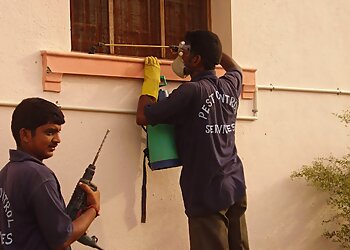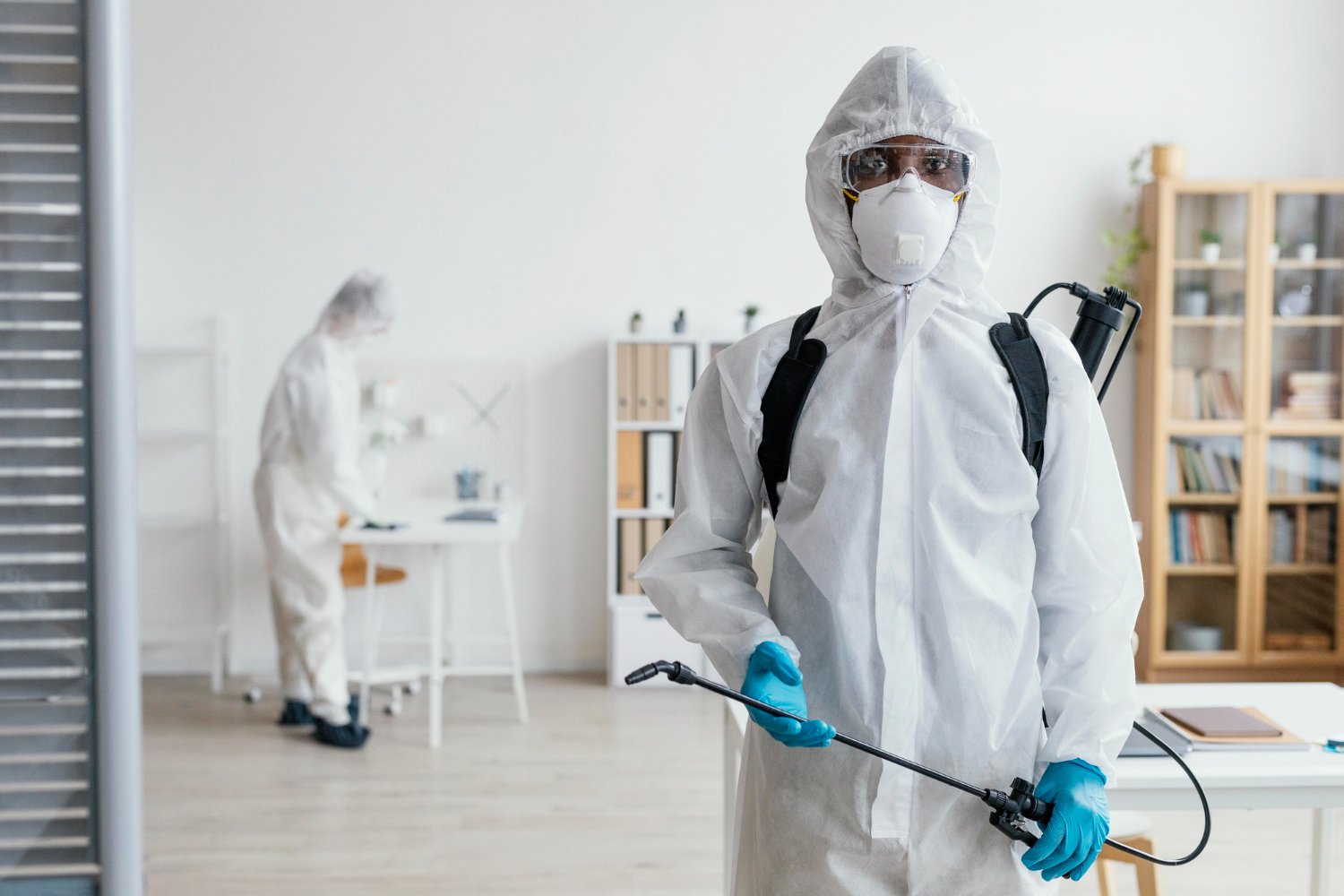A Comprehensive Overview to the Different Types of Pest Control Techniques
With the myriad of insect control techniques offered, it can be frustrating to find the most reliable service for a specific bug problem. In this comprehensive guide, we will discover these various types of parasite control techniques, providing insights into their applications and advantages. By the end, you will certainly have a clearer understanding of which approach might be the finest fit for your insect control requirements.
Chemical Parasite Control Approaches

One common kind of chemical pest control is pesticides. Pesticides target specific parasites, such as mosquitoes, termites, or ants, and can be made use of both inside your home and outdoors.
An additional type of chemical pest control is rodenticides. These are chemical materials made to manage populaces of rodents, such as rats and computer mice.
Weed killers, likewise recognized as herbicides, are an additional sort of chemical bug control method. Herbicides are designed to precisely eliminate undesirable plants, called weeds, without causing harm to desirable plants. They are frequently utilized in farming, landscaping, and gardening to control the growth of undesirable plants.
While chemical pest control techniques can be highly effective in removing pests, it is very important to use them carefully and comply with safety and security standards. Overuse or misuse of chemical pesticides can have adverse influences on human wellness and the setting. It is crucial to utilize these techniques sensibly and take into consideration different pest control methods whenever feasible.
Organic Pest Control Techniques
Biological bug control techniques include making use of living organisms or natural compounds to handle and control pest populations. Unlike chemical methods, which often depend on synthetic chemicals, biological control approaches utilize the natural adversaries of pests to control their populations. This approach is taken into consideration even more environmentally pleasant and lasting, as it lowers the use of dangerous chemicals and decreases the risk of pesticide resistance.
One widely utilized biological bug control method is the introduction of all-natural killers or bloodsuckers. Ladybugs are presented to regulate aphids, while specific wasp varieties are released to target caterpillars. These killers and bloodsuckers prey on parasites, reducing their numbers and protecting against problems.
An additional organic control approach is using microorganisms. Specific germs, viruses, and fungis can be employed to contaminate and eliminate certain insects. The bacterium Bacillus thuringiensis is typically utilized to manage caterpillars, as it produces toxins that are lethal to these bugs.
Organic control methods can likewise involve the usage of pheromones or natural substances that interrupt the mating patterns of parasites. By disrupting their reproduction, these techniques help to decrease pest populations gradually.
While biological bug control techniques are typically effective, they might require longer durations to achieve preferred results contrasted to chemical methods. Additionally, careful consideration has to be provided to the option and release of natural enemies to stop unexpected damage to helpful organisms or environments.
Physical Pest Control Methods
To effectively manage and regulate pest populations, alternative parasite control methods called physical bug control techniques are utilized. These approaches involve the use of physical barriers, catches, or tools to stop insects from accessing or harming building. One common physical parasite control technique is the usage of displays or nets to maintain insects out of buildings or yards. These displays are commonly made from fine mesh material that permits ventilation while preventing parasites from entering. One bed bug problem more physical pest control approach is the installation of fencings or wall surfaces to keep bigger bugs, such as deer or bunnies, out of yards or farming areas. These obstacles physically block the insects' access to the area, reducing the potential for damages. In addition, catches and devices can be made use of to record or fend off parasites. For instance, sticky traps can be positioned in areas where insects are a problem, and the bugs become stuck to the glue surface. Ultrasonic tools can also be utilized to give off high-frequency noises that are unpleasant to pests, causing them to leave the area. Physical insect control approaches are an eco friendly alternative to chemical pesticides, as they do not count on using unsafe chemicals.
All-natural Parasite Control Techniques
All-natural insect control approaches offer a lasting and green method to handling and eliminating bugs. One of the most usual natural insect control approaches is biological control. By adopting these natural bug control approaches, people and neighborhoods can efficiently take care of insects while reducing the unfavorable impacts on the environment and human health and wellness.
Integrated Parasite Management (IPM)
Integrated Parasite Monitoring (IPM) is a thorough and organized strategy to pest control that combines different techniques and techniques to effectively take care of pests while minimizing using chemical pesticides. IPM aims to maintain bug populaces listed below the economic injury degree by utilizing a combination of cultural, organic, and chemical control approaches.
Cultural control techniques involve can do pest control customizing the atmosphere to make it less favorable for bugs. This can include practices such as plant turning, proper cleanliness, and making use of resistant plant ranges. By producing negative conditions for insects, social control methods can significantly minimize pest populations.

Chemical control techniques are used as a last hope in IPM. They involve the targeted and cautious usage of chemicals to take care of pest populations. Unlike traditional parasite control approaches, IPM aims to minimize top article making use of chemical pesticides by using alternative methods.
Integrated Parasite Monitoring (IPM) is an aggressive approach that concentrates on lasting bug management as opposed to counting exclusively on reactive procedures. By incorporating several control approaches, IPM supplies a more sustainable and ecologically pleasant approach to pest control.
Final Thought
Finally, this article has actually given an extensive review of the various types of parasite control methods. It went over chemical, biological, physical, and natural insect control techniques, in addition to the incorporated insect monitoring technique. By understanding these various approaches, individuals can make informed decisions on which parasite control technique is most suitable for their details requirements and choices. Reliable pest control is important in keeping a healthy and balanced and pest-free environment.